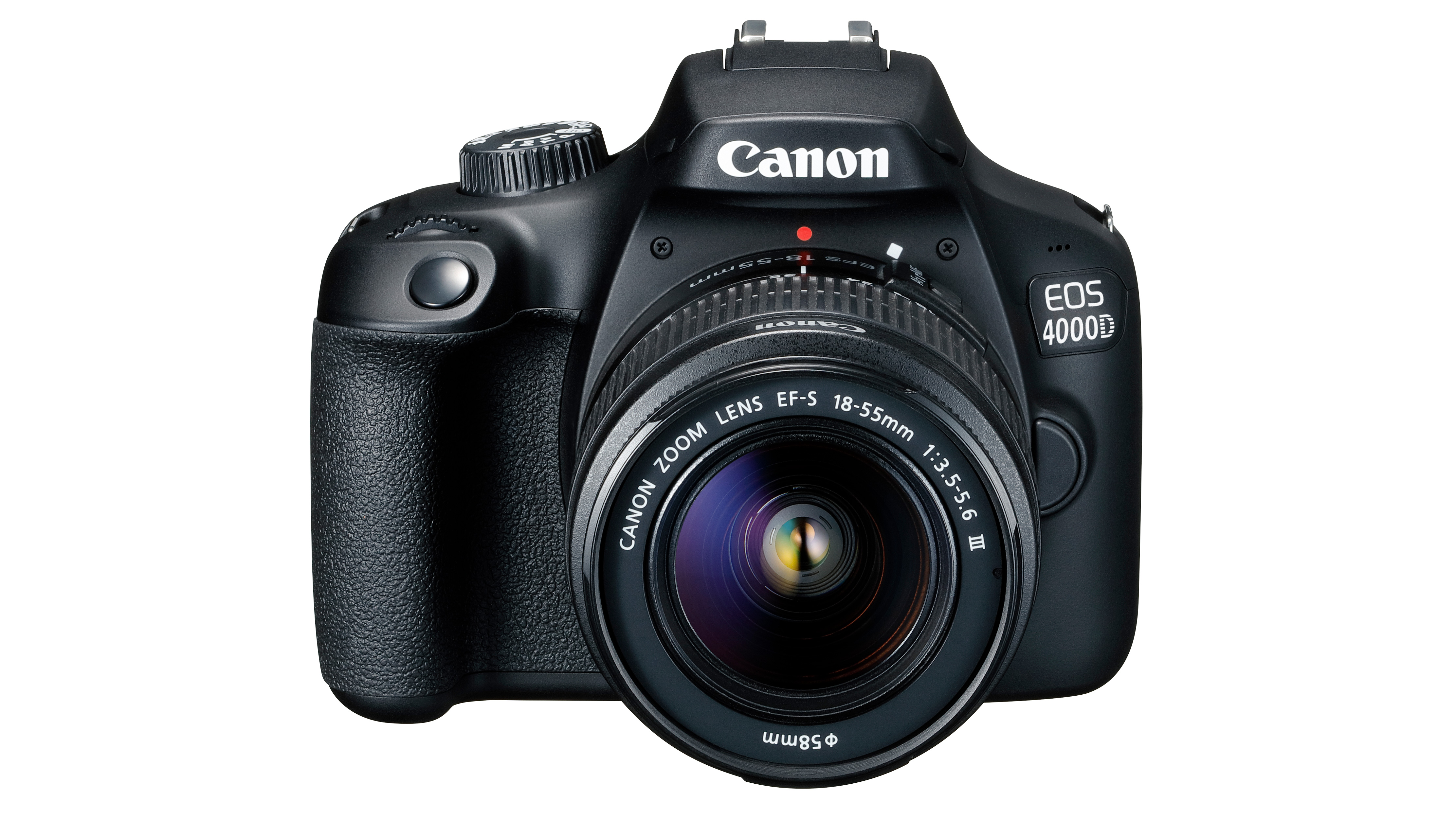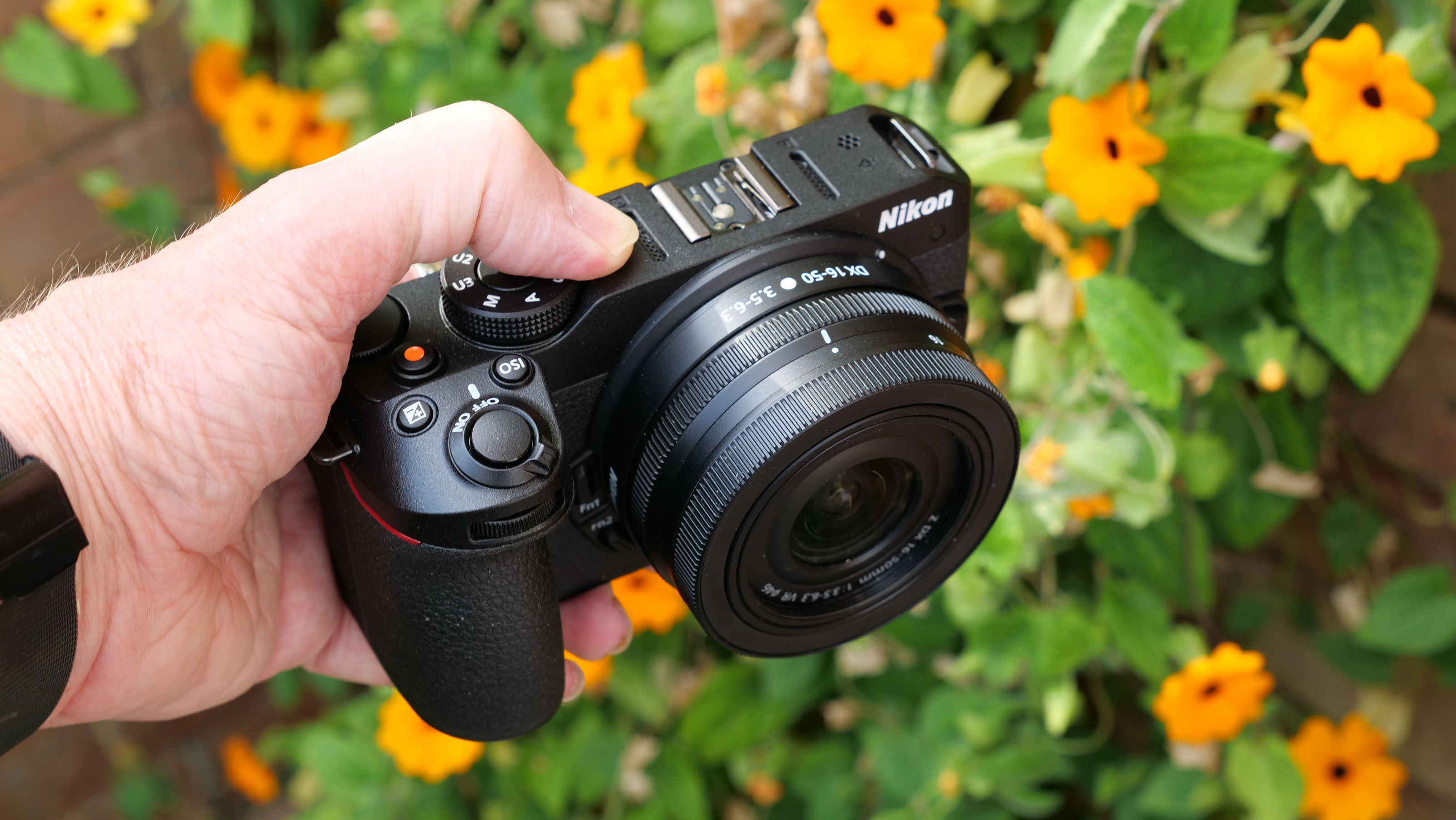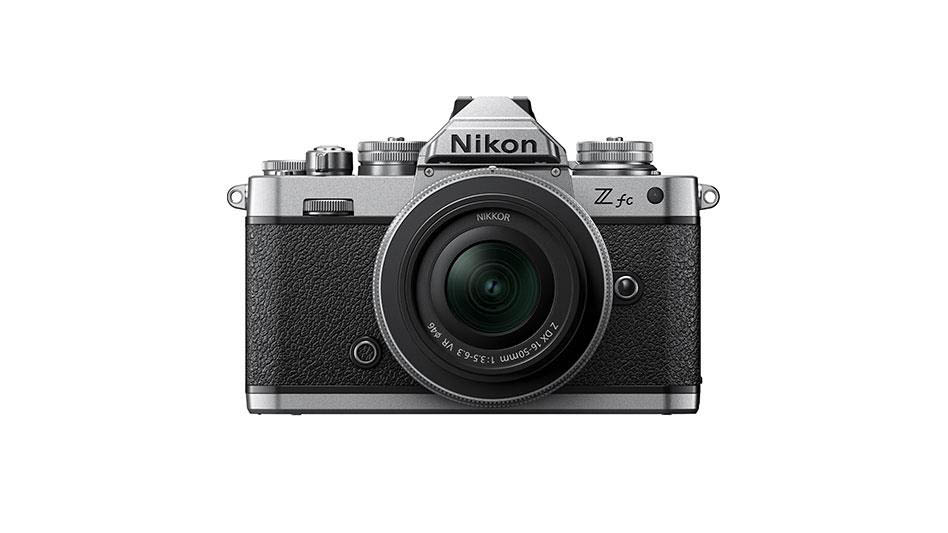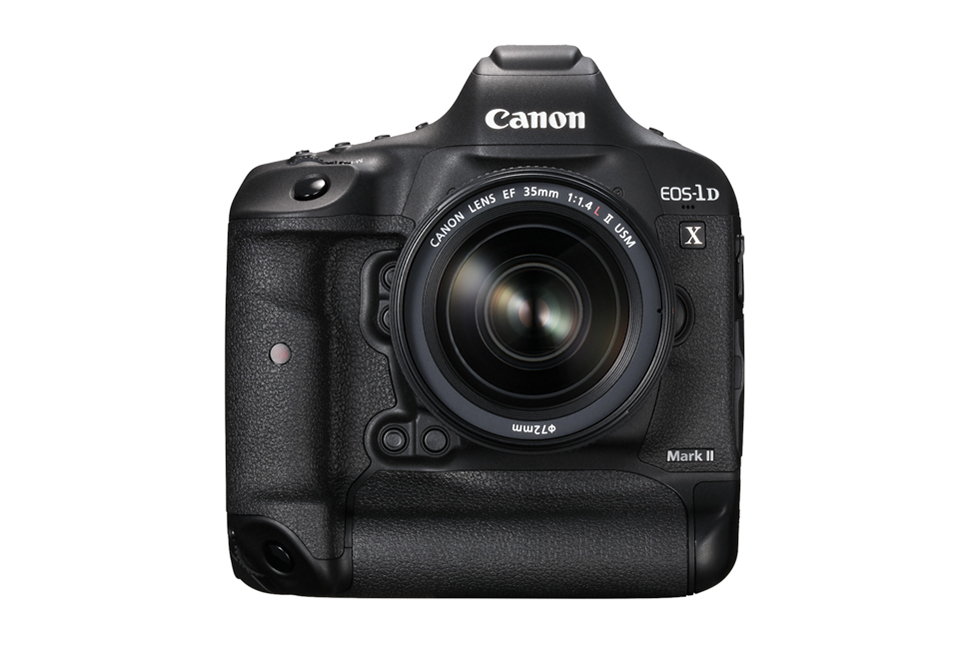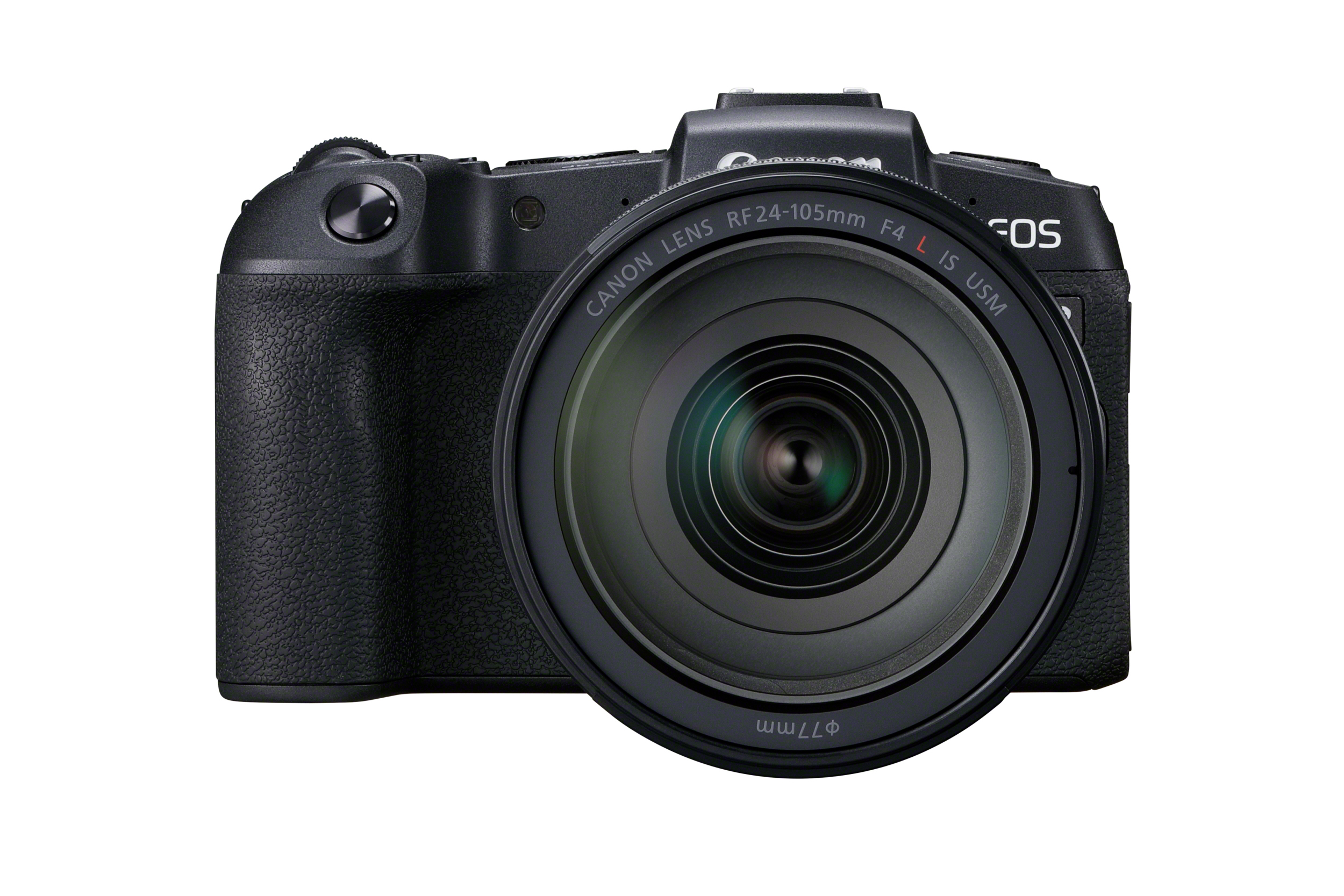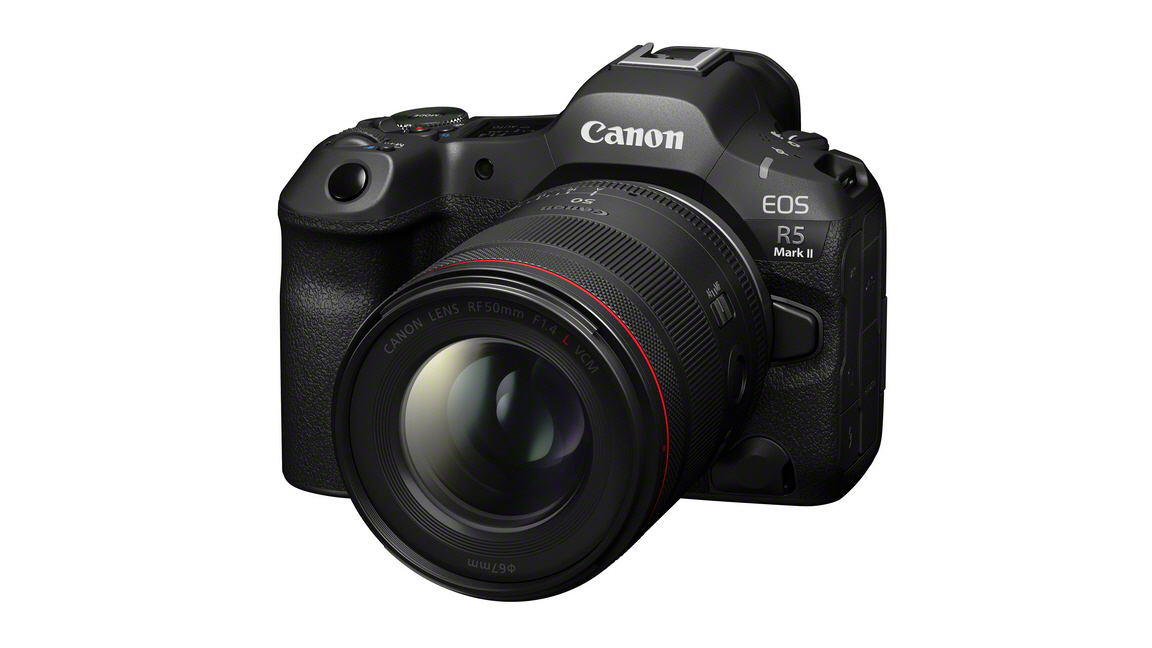Canon vs Nikon: who makes the best cameras in 2025?
Canon vs Nikon: the two biggest names in photography are still going toe-to-toe with new cameras – but who’s winning?
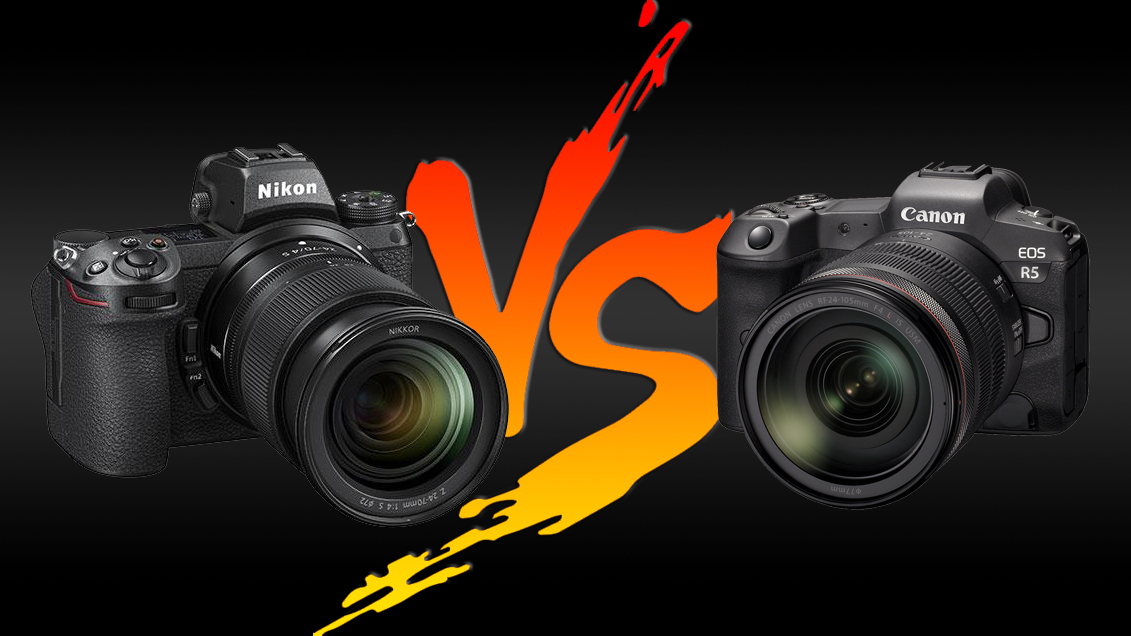
The Canon vs Nikon rivalry has long, rich history that pre-dates even the digital era. These two photography powerhouses have long produced cameras for professionals, beginners and everybody in-between, from the days of film SLRs to digital DSLRs, and now onto mirrorless. The question remains – Canon vs Nikon, which is better?
Now that the DSLR vs mirrorless camera debate has, at last, concluded firmly on the side of mirrorless, Nikon isn't even the number two camera company in the world any more. Canon is now dueling with Sony for that honor. And the reason is that the best Sony cameras are all mirrorless – and Nikon's molasses-like move to mirrorless cost it significant market share.
While Canon and Nikon are both still producing DSLRs, the battleground has now firmly shifted to the mirrorless arena. Both brands have removed the mirrors from their flagship cameras, the Nikon D6 being replaced by the Nikon Z9 and the Canon EOS-1D X Mark III giving way first to the Canon EOS R3, and then to the next-generation Canon EOS R1.
After focusing on the full frame arena first and foremost, both brands have also unleashed their APS-C ground forces with cameras like the retro-inspired Nikon Z fc, the vlogging-oriented Nikon Z30, the wildlife powerhouse Canon EOS R7 and the beginner-friendly Canon EOS R100.
We’ve split our guide into the following sections: APS-C DSLRs, APS-C mirrorless cameras, full-frame DSLRs and full-frame mirrorless. You can use the buttons at the top of this page to go straight to the section you’re interested in, or just scroll down to browse. We’ve also put in sub-headings for different camera types and price points to help clarify the choices and make your final decision simpler.
Canon vs Nikon: who makes the best cameras today?
Why you can trust Digital Camera World
APS-C DSLRs
Cheap as heck DSLRs
Canon has no competition here. In the Canon EOS Rebel T100 / Canon EOS 4000D, it makes the world’s cheapest DSLR – a camera so cheap it only uses one paint color, has an 18MP sensor we thought we’d seen the last of, and usually comes with a poor non-stabilized Canon EF-S 18-55mm f/3.5-5.6 III kit lens. This is the cheapest DSLR kit you can get – especially if you get it on the second-hand market, as is increasingly becoming the main option, especially in the UK.
However, we think the compromises aren’t worth the saving – you should just spend a bit more and get the far superior Nikon D3500 (below) with its 18-55mm AF-P VR kit lens.
Good starter DSLRs
This is what we consider the baseline for a DSLR worth buying, and it’s an interesting choice between the Canon EOS Rebel T7 / Canon EOS 2000D (which you can still find new) and the Nikon D3500 (which you will have to buy secondhand). The Nikon is typically cheaper and, we think, the better camera. We don’t much like the way Canon has chosen to remove the Dual Pixel CMOS AF (is that a strategic or a price decision?) and it’s often sold with the poor EF-S 18-55mm DC III kit lens, so be prepared to shop around and pay a little more to get the better EF-S 18-55mm IS II lens.
Likewise with the D3500 – definitely pay a little more to make sure you get the VR version of the Nikon AF-P 18-55mm kit lens. However, as the D3500 was officially discontinued in 2022, be aware that you'll likely be shopping on the second market (though new versions are still floating around, particularly in the US). The Canon EOS Rebel T7 / Canon EOS 2000D is still available new and used in the US and UK.
DSLRs for advanced beginners
If you want an easy to use camera that’s a little more advanced, Canon has this area pretty much sewn up with three different models to choose from. Our favorite is the EOS Rebel SL3 / Canon EOS 250D, which is small, responsive and shoots 4K. The older Canon Rebel T7i / Canon EOS 800D costs more, doesn’t shoot 4K and hardly seems worth the extra, while its replacement the Canon EOS 850D is an expensive and merely modest improvement.

The Canon EOS 77D is designed with more advanced users in mind, but we think you’re better off opting for the Canon EOS 90D (see more on this camera in the next section) if you’ve reached that stage. The Nikon D5600 is cheaper than all of them, and does have a fully articulating rear screen, but it lacks 4K and only has sluggish contrast AF in Live View – but it’s definitely a good buy if neither of those things matter to you, and it matches the Canons for image quality and lens choice.
Once again, in many of these cases you're going to be looking second-hand, as cameras like the D5600 and EOS 77D have been discontinued. We'd recommend buying from reputable second-hand retailers rather than private sellers as you'll get a limited warranty and a guarantee that the camera has been checked over by a professional – see more in our guide to the best used cameras.
DSLRs for enthusiasts and experts
Canon and Nikon take very different approaches in this sector of the market. The Canon EOS 90D is like the Leonardo da Vinci of cameras – there’s almost nothing it can’t do (though the Canon EOS R7 is effectively its mirrorless counterpart, if you want to go that route). It has the highest resolution APS-C sensor yet, shoots 4K video, has a continuous shooting speed of 10fps and has a fully articulating rear screen and fast Dual Pixel CMOS AF for Live View and video.
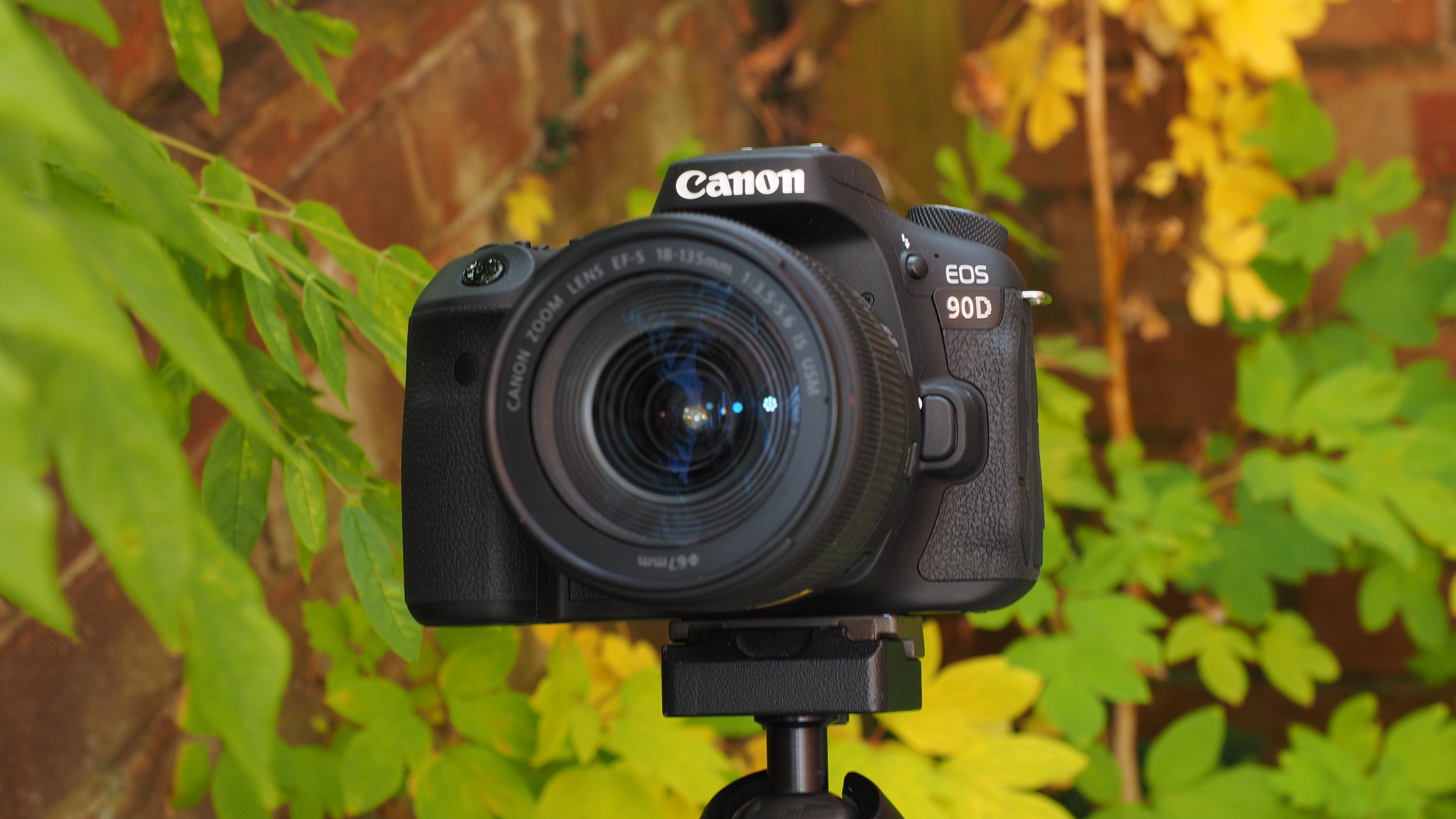
Nikon has two enthusiast / expert cameras, and while neither can match the 90D’s all-round abilities, they have strengths of their own. The Nikon D7500 is sturdy, powerful and affordable, and even when bundled with Nikon’s longer-range 18-140mm kit lens, it’s a lot cheaper.
The Nikon D500 has only 20MP to the Canon’s 32.5MP, but it does shoot 4K video and also shoots at 10fps. It’s actually a very different sort of camera, though, designed with professional levels of robustness, Nikon’s best-ever 153-point AF system and a 200-shot continuous shooting buffer capacity that the EOS 90D can’t even approach. Plus, its second-hand prices are very tempting indeed.
APS-C mirrorless
Easy APS-C mirrorless cameras
This used to be an easy open goal for Canon, as Nikon had nothing in this area of the market at all, but now there's the Nikon Z30 in this category. A vlogging-centric camera, it offers an agile platform for creating great-looking video. However, it has no viewfinder, so will likely be of limited appeal to stills photographers.
Canon's simple APS-C bread and butter used to be the EOS M series, with the super-popular Canon EOS M50 Mark II combining mini-DSLR styling with 4K video and a fully articulating rear screen. However, this series has been abandoned in favour of EOS R, and the EOS M50 Mark II has been replaced, however, by the newer Canon EOS R50 – which does everything the same or better, and uses the newer (and slightly larger) RF-mount lenses.
The best pick for simple APS-C, though, has to be the entry-level Canon EOS R100 – a mirrorless camera that has no business being as capable as it is, while still remaining incredibly user-friendly, at such a low price point.
Advanced APS-C mirrorless
The phrase "style over substance" is generally used by boring people with no sense of style. And it's pure nonsense, as the Nikon Z fc proves yet again that style is substance. Inside it's exactly the same as the 20.9MP Nikon Z50, but it's housed in a gloriously retro-inspired SLR-style body that would be right at home with Fujifilm and Olympus' classic-looking cameras.
More recently, Nikon has updated the Z50 with a new turbo-charged version, the Nikon Z50 II. While its resolution and many other headline specs are the same as the original, the inclusion of the Expeed 7 processor puts its autofocus performance almost on a par with that of the pro cameras in the Nikon range. It's a better camera than the Z fc in pretty much every way except style – and it's even often cheaper.
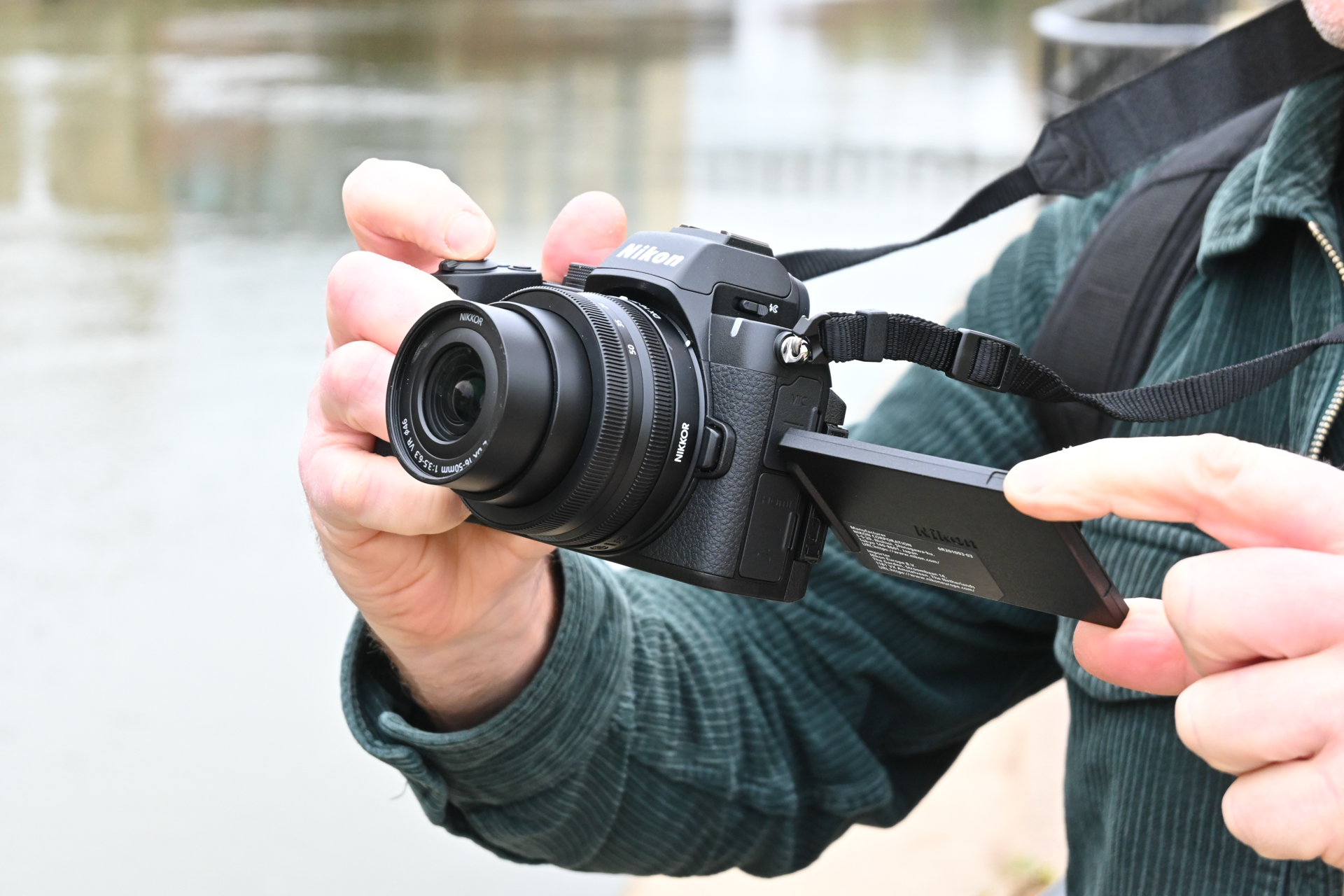
That said, if you're looking at APS-C mirrorless then the most powerful option is the magnificent Canon EOS R7. This Swiss Army Knife camera can handle anything you throw at it, with a high-res 32.5MP sensor, 30fps burst shooting, 4K video that's downsampled from 7K, and twin memory card slots. It's unquestionably more powerful than the Z50 II, though also much more expensive.
Full frame DSLRs
Entry level full frame DSLR
Canon held the lead in the entry-level full frame DSLR market for quite some time thanks to the Canon EOS 6D Mark II, an exceptionally versatile camera. Nikon, however, eventually replaced its capable but aging Nikon D750, which was launched back in 2014, with the Nikon D780.
The D780 is an exceptional machine that proves there's life in the DSLR yet. It easily outguns the 6D Mark II with uncropped 4K video and much faster continuous shooting speeds. Dual UHS-II card slots and exceptionally good live view autofocus make the D780 a camera that suits even real power users.
The EOS 6D Mark II has been discontinued; the D780 at time of writing, has not. This has served to further exaggerate the price difference between the two, as you will spend much more on a new D780 than you will on a used EOS 6D Mark II. However, as long as you're prepared to spend the extra cash, we think the balance of power in the entry-level full frame DSLR category has shifted Nikon's way. The D780 is unquestionably superior.
Pro full frame DSLR
Professional users are extremely important to both Canon and Nikon, and both companies have taken a similar line with their high-speed sports cameras. However, at the top of the range, one model emerges the clear winner, and that is the Canon EOS-1D X Mark III. This hugely impressive DSLR is packed with futuristic tech like deep-learning AF with astonishing subject detection and tracking, and a Smart Controller that eclipses the traditional joystick. It also finds room for uncropped 4K and CFexpress Type B support, feeling very much like a traditional camera built for the future.
The Nikon D6, meanwhile, is a perfectly fine professional camera, and it makes sense to upgrade if you're already invested in the system, but it's disappointingly unambitious and nowhere near the same class as its rival.
In both cases, these are the last and best pro DSLRs that either firm will ever produce, as subsequent pro releases have moved onto the mirrorless ranges. With that said, both the EOS-1D X Mark II and D6 are eminently capable sports cameras.
Canon and Nikon also make everyday workhorse pro DSLRs, and these are very different. On paper the Nikon D850 just blows the Canon EOS 5D Mark IV away. It has 45.7MP to the Canon’s 30.4MP, it matches its frame-rate and beats it with the optional Nikon battery grip, it shoots full-width 4K video compared to the Canon’s cropped 4K mode, and the Nikon is typically cheaper. It's one of the most popular DSLRs of all time, particularly among wildlife photographers.

It's basically the reverse of the situation with the 1DX III and the D6 – if you’ve already invested in the Canon system, the 5D IV will do a fine job, but if you’re comparing these two cameras directly, the D850 wins by a mile.
Full frame mirrorless
Entry level full frame mirrorless
You don’t need us to tell you that full frame mirrorless cameras are the hottest topic in photography right now, and Canon and Nikon offer entry-level cameras that are slightly but significantly different.
The 26.2MP Canon EOS RP is designed to be simple, compact and affordable, and its fully articulated screen makes it incredibly versatile for both stills and video – even though the 4K 30p is cropped. It's pretty old now by mirrorless standards, but is still one of the cheapest full-frame cameras you can buy. Nikon's original entry-level mirrorless offering was the 24.3MP Nikon Z5 is slightly chunkier and heavier than the RP, which helpfully accommodates a second card slot, though it only features a tilting screen.
Both firms have since come out with improved entry-level full-frame model. We love the Canon EOS R8, which has slightly less resolution at 24.1MP, but has Canon's next-gen autofocus system (including all the fancy animal and subject tracking), oversampled 4K 60p video, and burst shooting that's 10x faster at 40fps.
More recently, Nikon has brought out the big guns in the form of the long-awaited Nikon Z5 II, which blends pro-level burst rates with beginner-friendly features like intelligent subject-recognition autofocus. We'd say it edges out the EOS R8 for serious enthusiasts and aspiring pros thanks to features like the dual card slots, though the EOS R8 has better autofocus.
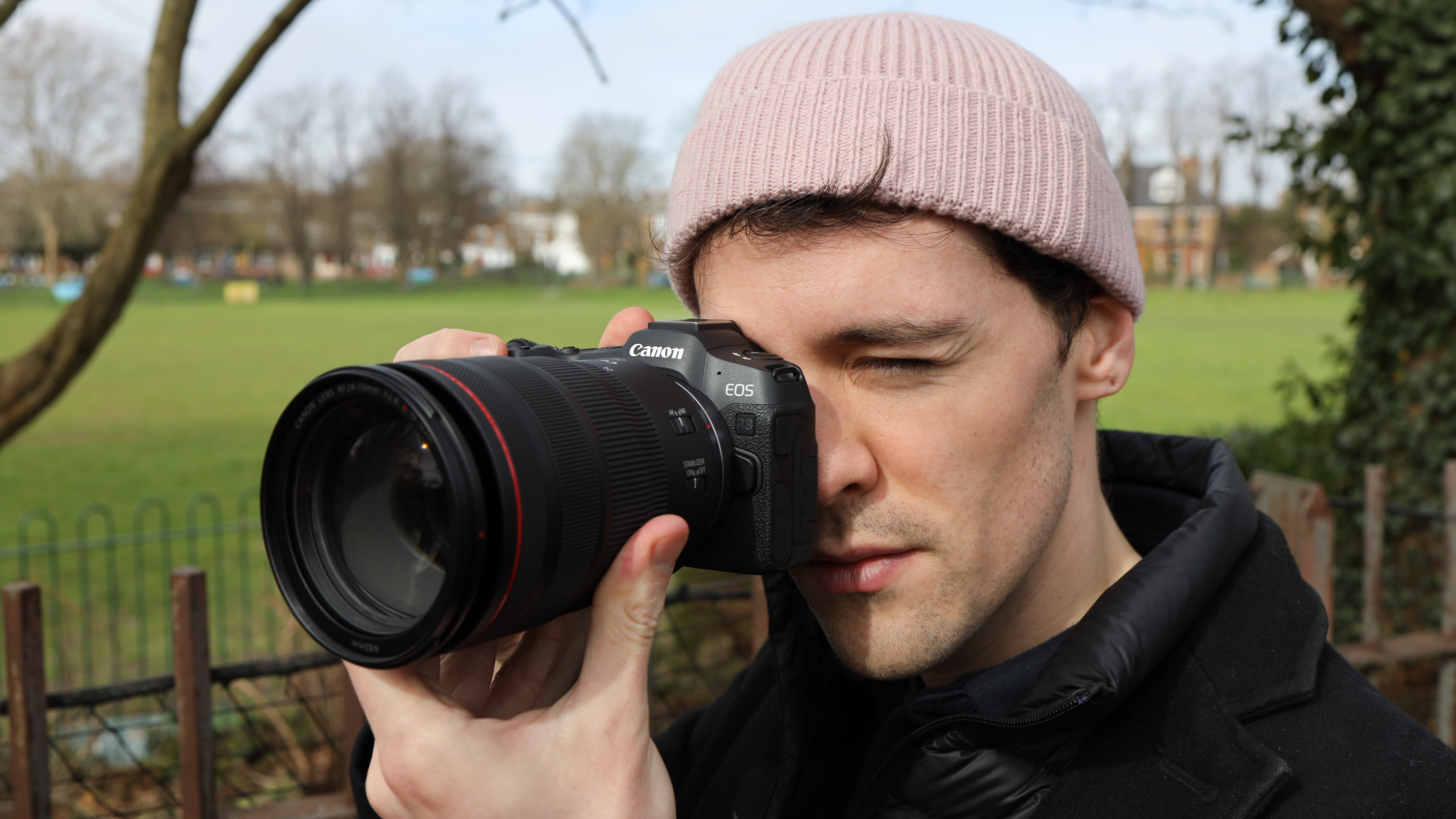
Advanced full frame mirrorless
While Nikon adapted its first-generation cameras with twin card slots and twin processors, the Nikon Z6 II and Nikon Z7 II for some time felt like lambs to the slaughter against the Canon EOS R6 Mark II and especially the Canon EOS R5.
Although both Nikon cameras are undeniably very capable, it did feel like the company was wheeling out Rocky Balboa pumped full of PEDs to step into the ring with Tyson Fury. Both Canons feature the best autofocus we've ever used (we called the Canon EOS R5 a "cheat code" for wildlife photography) along with blisteringly fast 30fps burst shooting, while the R5 is also equipped for 8K video. And now that the R5 shoots 400MP stills, it's the resolution king (with some caveats).
Aiming squarely at the R5 came Nikon Z8 – essentially the flagship Z9, with almost all the same features, but squeezed into a smaller body. Its specs are pretty similar to the R5 (though its 8K is 60p and doesn't overheat, and it offers 120fps shooting for low-res JPEGs) but Canon's AF system is still superior.
However, Canon has in turn hit back with the Canon EOS R5 Mark II, and right now that is arguably the advanced full-frame mirrorless camera to beat. While it loses that headline 400MP shooting mode (which to be honest was pretty situational anyway), it gains a powerful upscaling capability that allows it to output 180MP stills in-camera. Elsewhere, better-than-ever stabilization put the EOS R 5 Mark II firmly ahead of the Z8 – it's the advanced full-frame mirrorless model to beat.
Pro full frame mirrorless
While many pros use cameras like the EOS R5 Mark II or the Z7 II as their working tools, neither is actually considered a professional camera by their manufacturers (despite being in many ways perfect pro bodies, much like the 5D and D850 before them). Rather, both brands have designated professional-tier mirrorless cameras – with professional-tier price tags – in the form of the Nikon Z9 and the Canon EOS R1.
The Z9 opts for a high-res 45.7MP sensor, 8K 60p video, and 20fps RAW stills / 30 fps JPEG stills / 120fps 11MB stills. While the sky-high resolution doesn't suit pro sports or news workflows, the megapixels are invaluable for non-time-sensitive work, while the 8K 60p option isn't found on any other camera in the category.
Canon originally resurrected the 3-series product line with the Canon EOS R3, as a professional stopgap to tide over until the much-anticipated Canon EOS R1 – which has now replaced it as the series flagship. The EOS R1 shares a lot of next-gen tech with the EOS R5 Mark II, and it's safe to say it's the best sports camera we've ever used. Its native resolution of 24MP is the sweet spot for sports, enabling a sensible balance of quality and speed, but now you can upscale to 96MP should you ever need to.
New autofocus algorithms and predictive tracking make the EOS R1 into a preternatural camera for capturing action, practically capable of reading your mind. It never hunts, it never leaps to the background – it just nails the shot, again and again. It really is the sports camera of the future, delivering a 100% hit rate across thousands of shots.

Canon vs Nikon: the conclusion
Canon largely dominates the APS-C DSLR and mirrorless market for beginners and hobbyists, if only because of its sheer number of cameras. Nikon’s DSLR range is competent, but as is the case with both brands it hasn’t seen much development recently – and isn't likely to. Still, both make among the best DSLRs you can get because (apart from Pentax) nobody else makes them.
If you want a mirrorless camera rather than a DSLR, Canon has this won at the entry and enthusiast / advanced level of the market, but for professionals it's very much a needs-based scenario between their respective pro bodies. Still, because many of the best mirrorless cameras come from Fujifilm, Sony, OM System (Olympus) and Panasonic, both manufacturers are facing stiff competition – particularly Nikon, which fell as far as fifth place in the segment.
We don’t have any bias towards one brand or another, but it feels like Nikon is playing catch-up with the rest of the industry. After dragging its heels and falling behind in the transition from DSLR to mirrorless, it leapfrogged pretty much everybody with the technical showcase that is the Z9, and a few years down the line was leapfrogged right back with the EOS R1.
With both the Nikon Z system and EOS R ecosystems now nicely matured following their launch in 2018, it's all to play for in the mirrorless market.
Read more:
• PhotoPlus: The Canon Magazine
• These are the best Canon cameras today
• We pick the best Nikon cameras to buy
• The best mirrorless cameras right now
• These are the best cameras for professionals
The best camera deals, reviews, product advice, and unmissable photography news, direct to your inbox!

James has 25 years experience as a journalist, serving as the head of Digital Camera World for 7 of them. He started working in the photography industry in 2014, product testing and shooting ad campaigns for Olympus, as well as clients like Aston Martin Racing, Elinchrom and L'Oréal. An Olympus / OM System, Canon and Hasselblad shooter, he has a wealth of knowledge on cameras of all makes – and he loves instant cameras, too.
